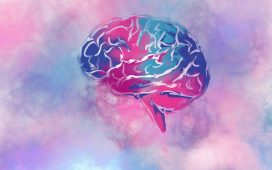Severe traumatic brain injury increases SADHD risk; within TBI group, familial dysfunction ups risk
MONDAY, March 19, 2018 (HealthDay News) — Children with early childhood traumatic brain injury (TBI) have increased risk of secondary attention-deficit/hyperactivity disorder (SADHD), according to a study published online March 19 in JAMA Pediatrics.
Megan E. Narad, Ph.D., from the Cincinnati Children’s Hospital Medical Center, and colleagues examined development of SADHD during the five to 10 years after TBI in a cohort of children aged 3 to 7 years hospitalized overnight for TBI or orthopedic injury (OI; used as a control group). Assessments were completed at zero to three months (baseline), six, 12, and 18 months, and 3.4 and 6.8 years after injury in 81 children and adolescents in the TBI group and 106 in the OI group.
The researchers found that 25.7 percent of the 187 children met the definition of SADHD. Compared with the OI group, severe TBI correlated with SADHD (hazard ratio [HR], 3.62; 95 percent confidence interval [CI], 1.59 to 8.26). There was a correlation for higher levels of maternal education with lower risk of SADHD (HR, 0.33; 95 percent CI, 0.17 to 0.62). Within the TBI group, familial dysfunction was associated with increased risk of SADHD (HR, 4.24; 95 percent CI, 1.91 to 9.43), with minimal associations for the OI group (HR, 1.32; 95 percent CI, 0.36 to 4.91).
“Early childhood TBI was associated with increased risk for SADHD. This finding supports the need for postinjury monitoring for attention problems,” the authors write. “Consideration of factors that may interact with injury characteristics, such as family functioning, will be important in planning clinical follow-up of children with TBI.”
One author disclosed financial ties to the medical technology industry.
Copyright © 2018 HealthDay. All rights reserved.








